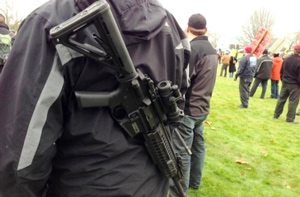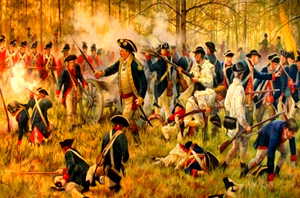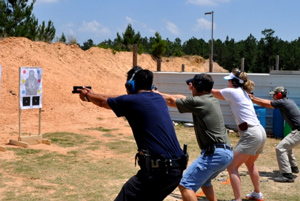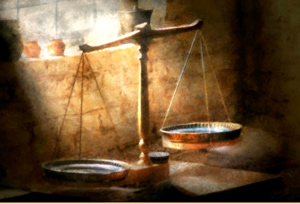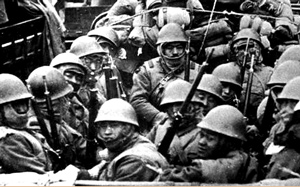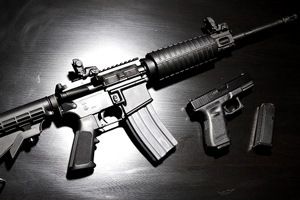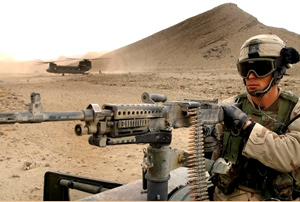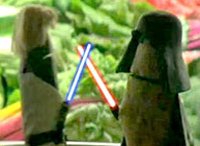9 Things You Didn't Know About The Second Amendment
Source: Policymic, By Matt MacBradaigh
Photo source: Policymic
1. The Second Amendment codifies a pre-existing right
The Constitution doesn't grant or create rights; it recognizes and protects rights that inherently exist. This is why the Founders used the word "unalienable" previously in the Declaration of Independence; these rights cannot be created or taken away. In D.C. vs. Heller, the Supreme Court said the Second Amendment “codified a pre-existing right.
The very text of the Second Amendment implicitly recognizes the pre-existence of the right and declares only that it “shall not be infringed ... this is not a right granted by the Constitution” (p. 19.)
2. The Second Amendment protects individual, not collective rights
The use of the word "militia" has created some confusion in modern times, because we don't understand the language as it was used at the time the Constitution was written.
However, the Supreme Court states in context, "it was clearly an individual right" (p. 20). The operative clause of the Second Amendment is “the right of the people to keep and bear arms shall not be infringed,” which is used three times in the Bill of Rights.
The Court explains that "All three of these instances unambiguously refer to individual rights, not 'collective' rights, or rights that may be exercised only through participation in some corporate body" (p. 5), adding “nowhere else in the Constitution does a 'right' attributed to “the people” refer to anything other than an individual right" (p. 6.)
3. Every citizen is the militia
To further clarify regarding the use of the word "militia," the court states “the ordinary definition of the militia as all able-bodied men” (p. 23).
Today we would say it is all citizens, not necessarily just men. The Court explains: “'Keep arms' was simply a common way of referring to possessing arms, for militiamen and everyone else" (p. 9).
Since the militia is all of us, it doesn't mean “only carrying a weapon in an organized military unit" (p. 11-12). “It was clearly an individual right, having nothing whatever to do with service in a militia" (p. 20.)
4. Personal self-defense is the primary purpose of the Second Amendment
We often hear politicians talk about their strong commitment to the Second Amendment while simultaneously mentioning hunting. Although hunting is a legitimate purpose for firearms, it isn't the primary purpose for the Second Amendment.
The Court states “the core lawful purpose [is] self-defense” (p. 58), explaining the Founders “understood the right to enable individuals to defend themselves ... the 'right of self-preservation' as permitting a citizen to 'repe[l] force by force' when 'the intervention of society in his behalf, may be too late to prevent an injury' (p.21). They conclude "the inherent right of self-defense has been central to the Second Amendment right" (p.56.)
5. There is no interest-balancing approach to the Second Amendment
Interest-balancing means we balance a right with other interests. The court notes that we don't interpret rights this way stating “we know of no other enumerated constitutional right whose core protection has been subjected to a freestanding “interest-balancing” approach. The very enumeration of the right takes out of the hands of government the power to decide on a case-by-case basis whether the right is really worth insisting upon.
A constitutional guarantee subject to future judges’ assessments of its usefulness is no constitutional guarantee at all” (p.62-63). This doesn't mean that it is unlimited, the same as all rights (more on that below). However, the court states that even though gun violence is a problem to be taken seriously, “the enshrinement of constitutional rights necessarily takes certain policy choices off the table" (p.64.)
6. The Second Amendment exists to prevent tyranny
You've probably heard this. It's listed because this is one of those things about the Second Amendment that many people think is made up. In truth, this is not made up. The Court explains that in order to keep the nation free (“security of a free state”), then the people need arms: “When the able-bodied men of a nation are trained in arms and organized, they are better able to resist tyranny" (p.24-25.)
The Court states that the Founders noted "that history showed that the way tyrants had eliminated a militia consisting of all the able bodied men was not by banning the militia but simply by taking away the people’s arms, enabling a select militia or standing army to suppress political opponents" (p. 25.)
At the time of ratification, there was real fear that government could become oppressive: “during the 1788 ratification debates, the fear that the federal government would disarm the people in order to impose rule through a standing army or select militia was pervasive" (p.25.). The response to that concern was to codify the citizens' militia right to arms in the Constitution (p. 26.)
7. The Second Amendment was also meant as a provision to repel a foreign army invasion
You may find this one comical, but it's in there. The court notes one of many reasons for the militia to ensure a free state was “it is useful in repelling invasions” (p.24). This provision, like tyranny, isn't an everyday occurring use of the right; more like a once-in-a-century (if that) kind of provision. A popular myth from World War II holds Isoroku Yamamoto, commander-in-chief of the Imperial Japanese navy allegedly said “You cannot invade the mainland United States. There would be a rifle behind every blade of grass.” Although there is no evidence of him saying this, there was concern that Japan might invade during WWII. Japan did invade Alaska, which was a U.S. territory at the time, and even today on the West Coast there are still gun embankments from the era (now mostly parks). The fact is that there are over 310 million firearms in the United States as of 2009, making a foreign invasion success less likely (that, and the U.S. military is arguably the strongest in the world.)
8. The Second Amendment protects weapons "in common use at the time"
The right to keep and bear arms isn't unlimited: “Like most rights, the right secured by the Second Amendment is not unlimited” (p. 54.) The Court upheld restrictions like the prohibition of arms by felons and the mentally ill, and carrying in certain prohibited places like schools and courthouses. What is protected are weapons "in common use of the time" (p.55.) This doesn't mean weapons in common use “at that time,” meaning the 18th Century. The Court said the idea that it would is “frivolous” and that “the Second Amendment extends, prima facie, to all instruments that constitute bearable arms, even those that were not in existence at the time of the founding" (p.8.) The Court's criteria includes weapons in popular widespread use “that [are] overwhelmingly chosen by American society" (p. 56), and “the most popular weapon chosen by Americans” (p. 58.)
9. The Second Amendment might require full-blown military arms to fulfill the original intent
The Court didn't rule specifically on this in D.C. vs. Heller, but noting that weapon technology has drastically changed (mentioning modern day bombers and tanks), they stated “the conception of the militia at the time of the Second Amendment’s ratification was the body of all citizens capable of military service, who would bring the sorts of lawful weapons that they possessed at home to militia duty. It may well be true today that a militia, to be as effective as militias in the 18th century, would require sophisticated arms that are highly unusual in society at large" (p. 55.)
They further added that “the fact that modern developments [in modern weaponry] have limited the degree of fit between the prefatory clause and the protected right cannot change our interpretation of the right" (p. 56). A full ruling has not been made, as this was not in the scope the court was asked to rule on in the D.C. vs. Heller case, but they left the door open for future ruling.
Thanks to James of Georgia
Obama's signal to progressives in 2007: Their messiah had arrived.
Thank you for considering to pass along these e-mails.
Did you miss one of our e-mails? Check out the link below.
HTML E-mail Content from Freedom is Knowledge
It is no measure of health to be well-adjusted to a profoundly sick society - J. Krishnamurti
| Fascism in America | It Doesn't Matter?! | What Privacy? | America Facing Evil | Whistleblower | Historic Biblical Times |
| Obama's 1990 article - “We’re Going To Reshape Mean-Spirited Selfish America.” | Print Page |
Listen to The Jimmy Z Show on the Internet - The right stuff from the left coast!
_____________________________________________________________
HOW TO SEARCH FOR CONTENT ON OUR EXTENSIVE CONSERVATIVE PORTAL
Freedom is Knowledge content can be easily word-searched using the Atomz Search Engine at the top of our About Us Web page along with Windows "Ctrl + F" FIND feature used for locating search words on any pages brought up in an Atomz search.
Once you review the HTML pages brought up by the Atomz Search Engine, click on a page to bring it up. It will then appear in your browser. Hold the "Ctrl +F" keys and a box will appear in the upper left top of the page. Type in the exact same word(s) you used in the original search. Click next and the word you typed in will immediately be highlighted where it is located on the page.
Click the "Next" Button again to see if your selected word appears anywhere else on the page. Or back up using the "Previous" Button.
Try it now. Go to Atomz Search Engine at the top of the About Us homepage and type in Darth Tader. Click on the gray bar. A page should come up with two selections to the words you typed in. Click on the URL of either one. When the page loads hit the "Ctrl +F" keys together. Type in (or paste in) Darth Tader into the empty box at the upper left top of the page. You will be immediately taken to where the words Darth Tader appears.
And of course please enjoy the Grocery Store Wars video.
Webmaster
Western North Carolina
www.freedomisknowledge.com
Background photo source: President George Washington
